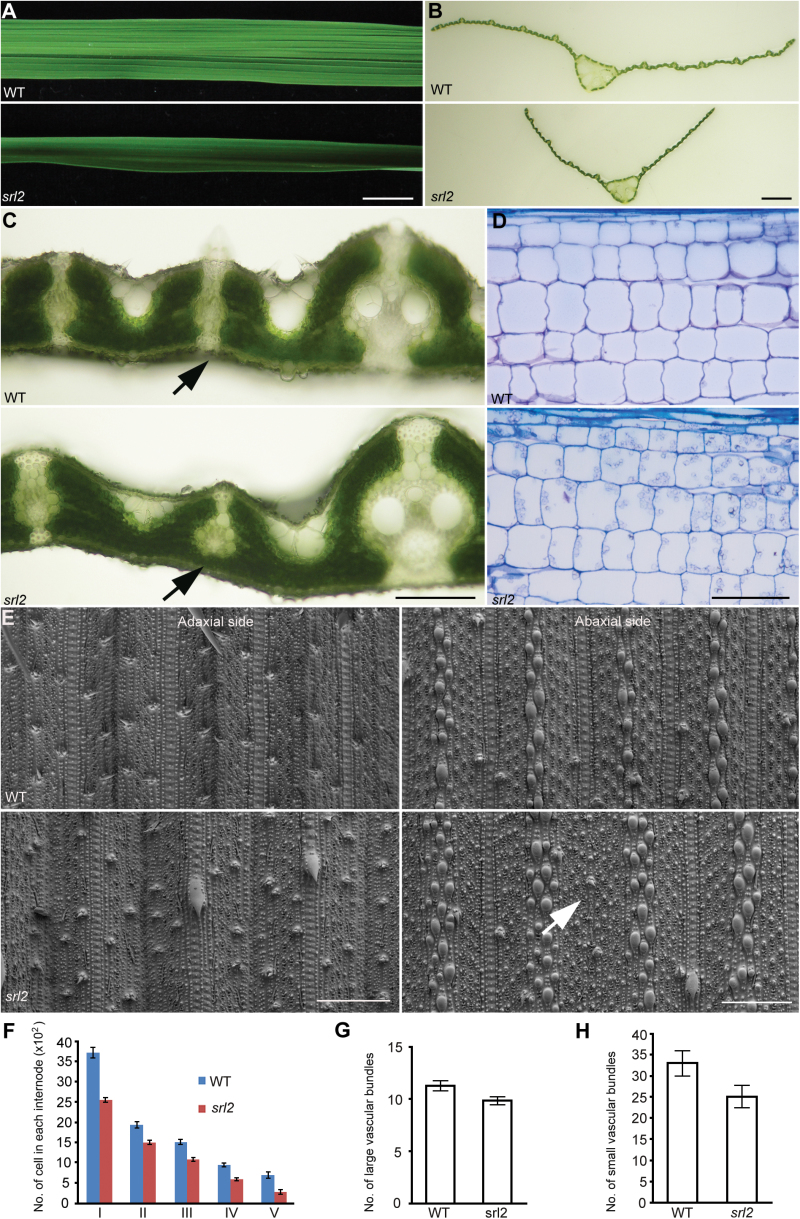Fig. 4.
The srl2 mutant has incurved leaves, with a deficiency of sclerenchymatous cells on the abaxial side. (A–C) Defective sclerenchymatous cells on the abaxial side of srl2 leaves. The defect is mainly present in the small veins where the curl occurs. (D) Longitudinal sections of wild-type and srl2 internodes. (E) Scanning electron micrograph of the adaxial and abaxial surfaces of wild-type and srl2 leaves. (F) Number of cells in each internode (mean of four culms ±SD). Quantification of the large veins (LV) (G) and small veins (SV) (H) in leaves of wild-type and srl2 plants (mean of six leaves ±SD). The arrows in (C) indicate the difference in abaxial sclerenchymatous cells between the wild type and srl2. The arrow in (E) indicates the absence of dumb-bell-shaped silica cells in the abaxial side of srl2 leaves. Scale bars=1cm (A), 1mm (B), 100 μm (C, D) and 150 μm (E).

